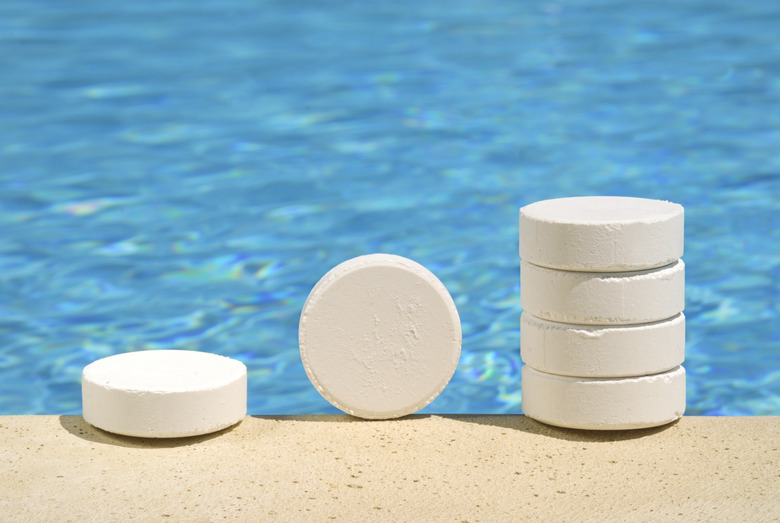Effects Of Chlorine Inhalation
Chlorine is a gaseous chemical element that is heavier than air. It is green to yellow at room temperature, and it has a pungent, irritating odor. If chlorine escapes from its container, a harmful concentration of the gas in the air will quickly result, according to the National Institute for Occupational Safety and Health. Inhalation of this poisonous gas, as well as all routes of exposure, has harmful effects on health, both short-term and long-term.
Uses
Uses
Chlorine is one of the 10 highest-volume chemicals made in the United States, according to the New York State Department of Health. The chemical is used in home cleaning products and industrial applications. Dissolved in water, chlorine becomes household bleach. Chlorine is used to prepare pesticides, synthetic rubber, polymers and refrigerant, and to disinfect water during treatment of industrial waste and sewage. Chlorine was the first gas used in chemical warfare during World War I.
Exposure Mechanism
Exposure Mechanism
Because of widespread use of chlorine, spills can lead to exposure. At room temperature chlorine is a gas, making inhalation the likely route of exposure. Other ways include eye or skin contact, or taking in food or water contaminated with chlorine. Health damage from chlorine inhalation is caused mainly by its corrosive properties.
Immediate Effects
Immediate Effects
Immediate effects begin within seconds or minutes of being exposed to chlorine. Severity, symptoms. and signs of immediate health effects depend on the amount of chlorine released, as well as the duration and route, according to the New York State Department of Health.
Low and High Exposure
Low and High Exposure
Low levels of chlorine exposure irritate the eyes, airways and skin, causing coughing, sneezing, excessive salivation and sore throat. Although the pungent odor can serve as an early warning, chlorine also causes olfactory adaption or fatigue, making it difficult to be aware of exposure. High levels of exposure can cause tightness in the chest, wheezing, dizziness, headache and bronchial spasm. Symptoms caused by exposure may be delayed.
Short-Term and Long-Term Effects
Short-Term and Long-Term Effects
Short-term exposure is not likely to result in long-term health problems. Effects of long-term exposure include lung irritation, shortness of breath lasting for years, mucus production and coughs. The effects of chlorine exposure can be worsened by cigarette smoking, according to the North Carolina Department of Health and Human Services.
Children
Children
The same level of chlorine exposure is likely to affect children more severely than adults. Children receive a relatively larger dose of chlorine because of their larger ratio of lung surface to body area, and because their lungs are closer to the ground, where levels of a chlorine spill might be greater.
Environmental Damage
Environmental Damage
Chlorine is extremely toxic to aquatic organisms, according to the National Institute for Occupational Safety and Health. Chlorine should not be allowed to enter the environment.
Cite This Article
MLA
Green, Carolyn. "Effects Of Chlorine Inhalation" sciencing.com, https://www.sciencing.com/effects-chlorine-inhalation-8693277/. 22 November 2019.
APA
Green, Carolyn. (2019, November 22). Effects Of Chlorine Inhalation. sciencing.com. Retrieved from https://www.sciencing.com/effects-chlorine-inhalation-8693277/
Chicago
Green, Carolyn. Effects Of Chlorine Inhalation last modified March 24, 2022. https://www.sciencing.com/effects-chlorine-inhalation-8693277/
